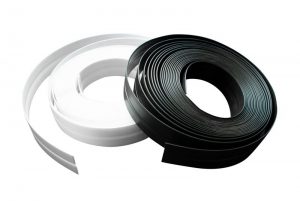
The term “living hinge” can be confusing. Hinges are mechanical devices that allow for a limited angle of rotation. They aren’t living organisms, of course. Rather, hinges are inanimate objects. Depending on the material from which it’s constructed, though, a hinge may be considered living.
Overview of Living Hinges
A living hinge is a type of hinge that’s comprised entirely of a single piece of flexible material. Some of them are made of silicone rubber, whereas others are made of polypropylene or polyethylene. Regardless, all living hinges are made of a single piece of an elastic material. The elastic material allows them to bend and flex without breaking or otherwise sustaining damage.
How Living Hinges Differ From Traditional Hinges
Traditional hinges are made of a hard material, such as plastic or metal. They aren’t able to bend or flex. Traditional hinges can still rotate after being secured to two workpieces, but they can’t bend or flex. If a traditional hinge is exposed to severe stress, it may break.
Another way that living hinges differ from traditional hinges lies in their parts. All living hinges have a single part, which is the material from which they are made. Traditional hinges, on the other hand, have several parts. Each traditional hinge has a pair of leafs and a pin. The two leafs are joined together so that they form a hollow knuckle in the middle. A pin is then inserted through the knuckle to hold the leafs together. Living hinges have leafs as well, but they don’t have a pin. The leafs on a living hinge are already joined because they are made of a single piece of material.
How Living Hinges Are Made
Most living hinges are made via injection molding. Manufacturers begin by heating up an elastic material in a special machine. Once the elastic material has liquified, it’s injected into a mold cavity. The mold cavity is a hollow shell featuring the same size and shape as the desired living hinge. The liquified elastic material will spread throughout the mold cavity while taking its size and shape.
As it sits inside the mold cavity, the liquified elastic material is allowed to cool. It can then be ejected from the mold cavity and used as a living hinge. Living hinges don’t contain multiple parts. While available in different sizes and shapes, they are made of a single piece of elastic material via injection molding.
